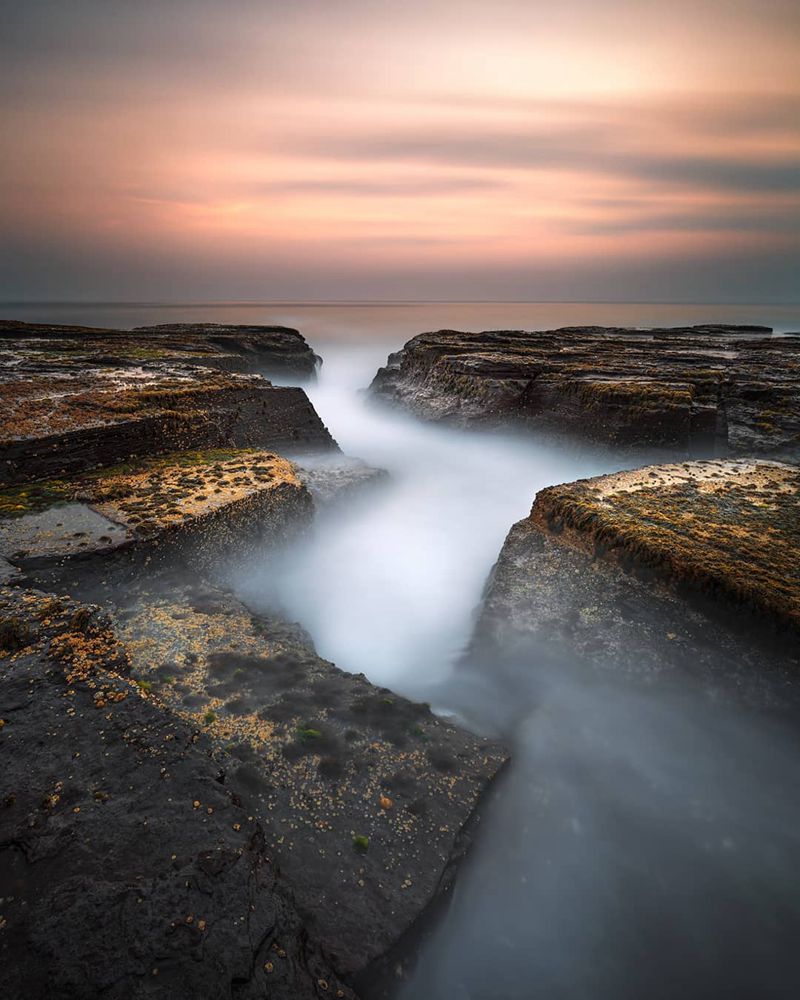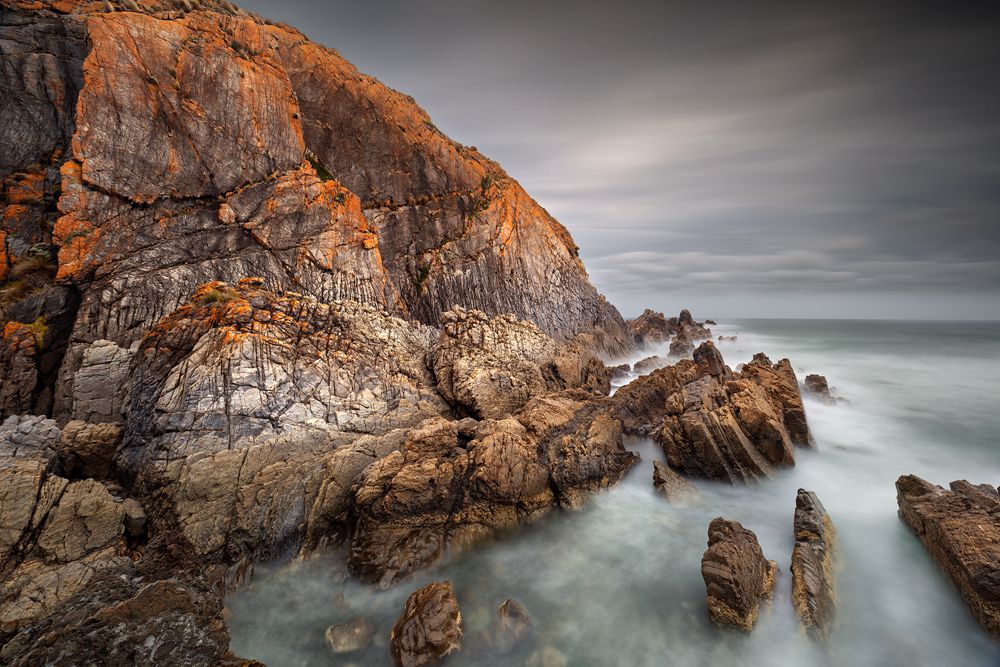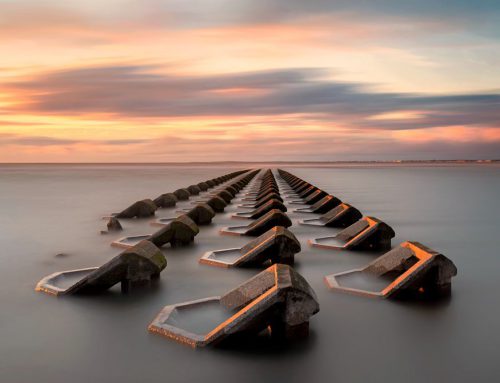
Kieran Stone is a landscape photographer from Australia. He used to work as a Biomedical Scientist in Histology and Immunohistochemistry. In early 2016, he quit his job to become a full time professional photographer, then make a living doing what he enjoy doing. Now he has been published in some prominent Australian photography magazines and is known throughout the spectrum of Australian landscape photographers that are active on Instagram. It’s a great chance for NiSi to talk with Kieran and learn more about his photography career and works.
Z for Zoe and K for Kieran Stone
Z: Hi Kieran! Thanks for being with us here! Firstly, could you share us three random facts about you?
K: Before photography I was a Biomedical Scientist in Histology and Immunohistochemistry.
I’ve had the same camera for 7 years (Canon 5D Mark III). Once I find something I like that works well, I don’t see a need to change it.
I have Erbs Palsy in my left arm. A birth injury that tore the shoulder nerves. The arm is about 15cm shorter than the right, some bones don’t connect properly and the muscles are atrophied. Being an 11 lb 6 oz baby had something to do with it.

Taken in Sydney, Australia
With NiSi ND (10 Stops)
Z: What inspired you to start taking pictures?
K: Travelling and experiences. I’ve always liked taking pictures of new places and events, but it wasn’t until I moved to London that I decided to learn more about “professional” photography. Once I came back I spent another few years building up my skill and knowledge base until I was happy enough with my work to take on photography full time.

Taken at Buderim Falls, Australia
With NiSi ND (6 Stops) + Landscape CPL
Z: How would you describe your work? Of the many subjects you’ve photographed, are there any that you found most attractive?
K: The more photography you do, the more you zero in on a style and genre that you like the most. For me this is landscapes with a simple but eye-catching composition. I’m happy with any landscape. From forests to cities, mountains to seascapes. The fewer people the better. Being alone in nature can be very regenerative for the mind and body. I try as much as I can to capture this essence in my photos.

Taken at at Rye Pier, Australia
With NiSi ND (3 Stops) + ND (10 Stops)
The symmetry of piers are great to photograph. They create the perfect lead in lines. When taking this photo, the wind was nearly knocking my tripod over and the water was chaotic. I wanted to create a sense of order from all that chaos so I stacked a couple of ND filters and had to hold my tripod done while the shutter was open. All I remember is huddling next to my camera with my jacket hood up trying to keep the wind and spray out of my face.
Z: What details do you believe make the best photographs? How do you go about focusing on them in your work?
K: Attention to any and all details make the best photographs. Still image means sloppy work is there to be found, and once found cannot be unseen. The only way to hone your attention to detail is through repetition and acknowledging your mistakes. I make a lot of mistakes and I know how to spot them and fix them if I’m able to. I do this by removing any emotional attachment to a photo. If you’re making photos for other people to enjoy then you need to see the photos as if they’re not your own. If you have to explain to someone what makes it a good photo, then it’s not a good photo. I also view my photos at different sizes, from thumbnail size to 200% zoom. That way you can see where the viewer’s eyes will first be drawn, and the tiny hot pixels and dust spots that drag the mind away, like a spelling mistake in a novel.

Taken at Buderim Falls, Australia
With NiSi ND (3 Stops) + Landscape CPL
Z: When did you start using NiSi filters and why?
K: Like everyone else that’s looking to use filters for the first time I did a little research and then just guessed. I had a mixed assortment of different brands before I got a NiSi 6-stop ND. I liked the quality of the filter and just wanted to be a part of the community NiSi Filters were building. There was always something that frustrated me about my filters of the other brands so I wanted to stick to one brand. There was no better choice than NiSi.

Taken at Cape Liptrap, Australia
With NiSi ND (10 Stops)
Cape Liptrap Lighthouse is a lesser shot location on the Victorian coastline. The last shot I took before the restrictions took place. The sense of isolation here is amazing. In this shot I wanted a long exposure to take the detail out of the water and focus the attention on the interesting colours and lines of the jagged rock face.
Z: Which NiSi products do you usually use in your work?
K: The right one! I never have a definite filter I will use when I approach a scene. It all depends on the type of shot I’m going for and the conditions in front of me. I have a range of ND and Grad filters to make sure I can get the shot I want. That being said, if I could only take one filter with me, it would be a 10-stop ND. I can try and make do with other photography techniques if I have to, but a 10-stop will always give you something special that a camera alone can’t do.

Taken at the Twelve Apostles, Australia
With NiSi ND (10 Stops) + Reverse GND (3 Stops)
Z: Among all the photos you took with NiSi filters, which one is your favorite? What went into creating it?
K: If I had to pick a favourite, it would have to be “Bombo Cascade”. Again this comes down to choosing the right filter for the job. I was shooting sunrise at Bombo Quarry and the sun had just come above the horizon. The light was changing fast but a 10-stop or 6-stop would have still slowed the shutter speed down too much to capture the detail in the water. The swell and the crashing of the water against the rocks there is amazing to watch. Too long of an exposure and you lose the drama, too short and you lose a sense of movement. So all I needed was a 3-stop ND to get my shutter just right, 0.3sec, to capture the scene how I wanted.
Bombo Cascade
Taken at Bombo Quarry, Australia
With NiSi ND (3 Stops)
Using the right filter is more important than using the darkest filter. Thinking about what makes a location special is how you should decide how to capture it. Bombo Quarry is known for its powerful swell and characteristic rock stacks.
Z: Any tips for traveling and shooting in Australia?
K: Take your time. There are lots to see in Australia and you’ll never see it all. If you’re lucky you’ll see a lot of it, but enjoying it is more important than just looking at it later on a screen. Take the time to explore and you may discover a new place, or even just a new take on a popular location. Australia is so easy to get around and the photography community is great. One bit of safety wisdom though that is always good to remember, never turn your back on the ocean.

Taken in Sydney, Australia
With NiSi Natural Night
Z: What challenges do you think landscape photographers will face in the near future?
K: It’s hard to say. Technology is moving fast and good quality, or good enough quality, cameras are so easily accessible to everyone that either the market will be saturated with commercially viable photos, or locations will be trampled and over-shot. New challenges just create new opportunities though and those that are able to adapt will be successful. If you expect things to stay the way you like them now, then you’re doomed to fail.
Z: What’s your plan for this unusual year, photographically?
K: Relax and take it easy. I’m lucky enough that I don’t need to put a lot of pressure on myself and I plan to take full advantage of that. You don’t have to go out for photography to learn post-processing, which is a skill just as important as getting the right shot in camera. I like going back through my photos over the years and finding new gems that shine with increased post-processing knowledge. Reading or consuming other art forms also helps develop your eye for what would work in photography. Once restrictions are lifted I’ll get back out there shooting and helping others develop their craft.





